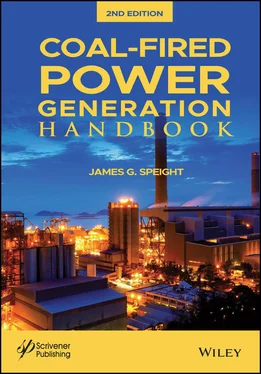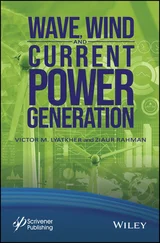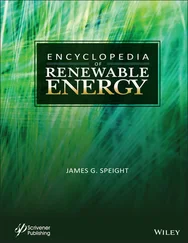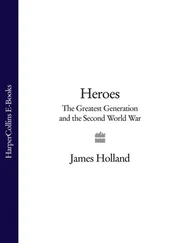Finally, the International Energy Agency (IEA) predicts that world energy demand will grow around 60% over the next 30 years, most of it in developing countries. China and India are large countries in terms of both population and land mass, and both have substantial quantities of coal reserves – cumulatively, China and India account for 70% of the projected increase in world coal consumption. Strong economic growth is projected for both countries (averaging 6% per year in China and 5.4% per year in India from 2003 to 2030), and much of the increase in their demand for energy, particularly in the industrial and electricity sectors, is expected to be met by coal.
Even as demand grows, society expects cleaner energy with less pollution and an increasing emphasis on environmental sustainability. The coal industry recognizes it must meet the challenge of environmental sustainability. In particular the industry must reduce the greenhouse gas emissions if the industry is to remain a part of a sustainable energy future. The quality of coal needs to be assessed so that it can be suitably used in different industries. The mineral matter content and its type will give an idea related to the coal preparation practice that will be required to be adopted for coal cleaning and subsequent use.
Investigation of physical properties such as Hardgrove grindability index will help in deciding the type and capacity of crushing and grinding machine required in coal beneficiation plants. Spontaneous heating susceptibility studies of coal will help in deciding the coal in a judicious manner such that the coal is utilized before it catches fire. Keeping this in view the current text, it will become obvious that determination of coal quality and coal behavior are necessary to ensure that coal is utilized in the most optimum and environmentally acceptable manner.
Discussions of the origin of coal are typically restricted to geochemical texts or to more theoretical treatises that focus on coal chemistry. However, combustion of coal (as performed in a coal-fired power station) involves knowledge of combustion chemistry and the behavior of different coals in coal-fired power stations. Thus, it is the purpose of this section to focus on the origin of coal as it influences coal chemistry, particularly the combustion chemistry and behavior ( Chapter 7).
Coal is a combustible sedimentary organic rock that is formed from decayed plant remains, and other organic detritus. Although coal forms less than 1% of the sedimentary rock record, it is of foremost importance to the energy requirements of many countries and the origin of coal as it influences behavior has received much attention (Speight, 2013, 2020). However, coal is also a compact stratified mass of plant debris which has been modified chemically and physically by natural agencies, interspersed with smaller amounts of inorganic matter. The natural agencies causing the observed chemical and physical changes include the action of bacteria and fungi, oxidation, reduction, hydrolysis, and condensation – the effect of heat and pressure in the presence of water.
Coal has also been considered to be a metamorphic rock , which is the result of heat and pressure on organic sediments such as peat. However, the discussion is in favor of coal as a sedimentary rock because most sedimentary rocks undergo some heat and pressure and the association of coal with typical sedimentary rocks and the mode of formation of coal usually keep low-grade coal in the sedimentary classification system. Anthracite, on the other hand, undergoes more heat and pressure and is associated with low-grade metamorphic rocks such as slate and quartzite. Subducted coal may become graphite in igneous rocks or even the carbonate rich rocks such as carbonatites, which are intrusive or extrusive igneous rocks characterized by mineralogical composition and consisting of greater than 50% w/w carbonate minerals).
Coal is a sedimentary black or dark-brown rock that varies in composition. Some types of coal burn hotter and cleaner, while others contain high moisture content and compounds that, when burned, contribute to acid rain and other pollution. Coals of varying composition are used around the world as a combustible fossil fuel for generating electricity and producing steel. Because peat is not a rock and the unconsolidated plant matter is lacking the metamorphic changes found in coal, it is not typically classified as coal. Thus, coal is classified into four main types, depending on the amount of carbon, oxygen, and hydrogen present (i) lignite, (ii) sub-bituminous coal, (iii) bituminous coal, and (iv) anthracite.
The degree of alteration (or metamorphism) that occurs as a coal matures from lignite to anthracite is referred to as the rank of the coal, which is the classification of a particular coal relative to other coals, according to the degree of metamorphism, or progressive alteration, in the natural series from lignite to anthracite (ASTM D388). However, because of the chemical process involved in the maturation of coal, it is possible to broadly classify into three major types namely (lignite, bituminous coal, and anthracite). However, because of other differences, and the lack of other differences (with overlap between borderline coals) there is no clear demarcation between the different coals and other classifications such as semi-anthracite, semi-bituminous, and subbituminous are also used.
There are two predominant theories that have been proposed to explain the formation of coal: (i) the plant remains which eventually form coal were accumulated in large freshwater swamps or peat bogs during many thousands of years, which supposes that growth-in-place of vegetable material – the autochthonous theory , also often referred to as the swamp theory , and (ii) the coal strata accumulated from plants which had been rapidly transported and deposited under flood conditions – the allochthonous theory , also often referred to as the drift theory .
It is believed that major autochthonous ( in situ ) coal fields generally appear to have been formed either in brackish or fresh water, from massive plant life growing in swamps, or in swampland interspersed with shallow lakes. The development of substantial in situ coal measures thus requires extensive accumulations of vegetable matter that is subjected to widespread submersion by sedimentary deposits.
However, the types of fossil plants found in coal do not clearly support the autochthonous theory – for example, the fossil lycopod trees (such as Lepidodendron and Sigillaria ) and giant ferns (especially Psaronius ) that are common in Pennsylvanian coals may have had some ecological tolerance to swampy conditions, yet other Pennsylvanian coal plants (e.g., the conifer Cordaites , the giant scouring rush Calamites , the various extinct seed ferns) by their basic construction may have preferred existence in well-drained soils and not in the proverbial peat swamp . The anatomy of coal-forming plants is considered by many coal geochemists to indicate that initiation of the coalification lay down occurred in a tropical or subtropical climate, a conclusion which can be used to argue against autochthonous theory, for modern swamps are most extensive and have the deepest accumulation of peat in the higher-latitude cooler climates.
By way of explanation, coalification or metamorphosis of coal is defined as gradual changes in the physical and chemical properties of coal in response to temperature and time. The coal changes from peat through lignite and bituminous coal to anthracite. With extreme metamorphism and the changes, with increasing rank, include an increase in carbon content, and decreases in moisture content and volatile matter ( Table 1.2). However, the data presented in the table ( Table 1.2) are for illustrative purposes only and should not be construed to be precise since other effects (such as the mix of the coal precursors) will also play a role in the coalification process and the process is site specific (Speight, 2013).
Читать дальше












